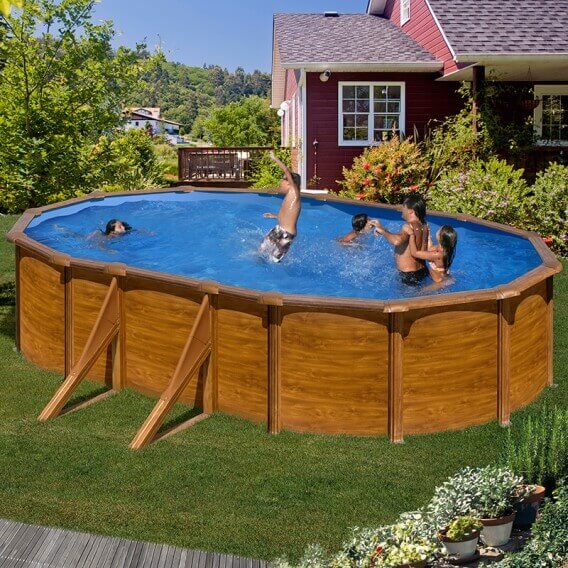
If you live in an area with cold winters, it is important to properly winterize your detachable pool to prevent damage to the pool and equipment. Winterizing your pool involves a series of steps to prepare the pool and its components for the cold winter months. In this article, we will discuss the best ways to winterize a detachable pool.
Step 1: Clean the Pool
The first step in winterizing your detachable pool is to clean the pool thoroughly. This includes removing any leaves, debris, and dirt from the pool. You should also brush the walls and floor of the pool to remove any algae or other buildup.
Once the pool is clean, you should balance the water chemistry to ensure that the pH, alkalinity, and calcium hardness are at the recommended levels. This will help prevent corrosion and scaling during the winter months.
Step 2: Lower the Water Level
The next step is to lower the water level in the pool. You should drain the water until it is below the skimmer and return lines to prevent water from freezing and causing damage to the equipment.
If you have a sand filter, it is important to drain the water from the filter and remove the drain plug. You should also remove the pressure gauge and store it in a safe place for the winter months.
Step 3: Remove Accessories
Before winterizing your detachable pool, it is important to remove all accessories from the pool, including ladders, skimmers, and pool cleaners. You should also remove any water from the accessories to prevent them from freezing and cracking. You can use a wet/dry vacuum to remove any remaining water.
Step 4: Add Winterizing Chemicals
Once the pool is clean and accessories have been removed, it is time to add winterizing chemicals to the pool. This includes adding a winter algaecide and a winterizing kit that contains a winterizing shock and a winterizing floater.
The winter algaecide will help prevent the growth of algae during the winter months, while the winterizing shock will help sanitize the pool water. The winterizing floater will slowly release chlorine into the water to maintain proper sanitation levels.
Step 5: Install a Pool Cover
The final step in winterizing your detachable pool is to install a pool cover. A pool cover will help protect the pool from debris and prevent evaporation during the winter months.
When choosing a pool cover, it is important to choose a cover that fits the pool properly and is designed for winter use. It is also important to periodically check the pool cover throughout the winter months to ensure that it is still secure and in good condition.
Additional Tips for Winterizing Your Pool
In addition to the steps outlined above, there are a few additional tips that can help you properly winterize your detachable pool:
Monitor the water level – It is important to periodically check the water level in the pool throughout the winter months. If the water level is too low, you may need to add water to prevent damage to the equipment.
Protect the pool from ice – If you live in an area with harsh winters, it is important to take steps to protect the pool from ice. This can include adding an ice compensator to the skimmer to prevent damage to the skimmer and return lines.
Remove snow from the pool cover – If you live in an area with heavy snowfall, it is important to remove snow from the pool cover to prevent damage to the cover and the pool.
Hire a professional – If you are unsure about how to properly winterize your detachable pool, it is best to hire a professional to do the job. A professional pool company can ensure that your pool is properly winterized and can help you avoid costly damage.
Conclusion
Properly winterizing your detachable pool is essential to prevent damage to the pool and equipment during the cold winter months. By following the steps outlined above and taking a few additional precautions, you can ensure that your pool is properly winterized and ready for use when the warmer weather returns.

